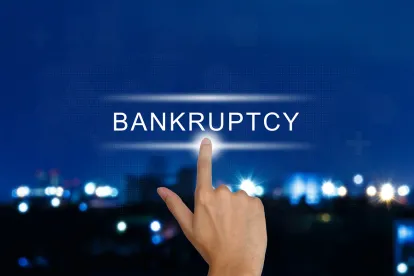Last week the Second Circuit issued its long-awaited opinion on the appeals of plan confirmation taken by the first lien, 1.5 lien and subordinated noteholders in In re MPM Silicones, LLC (“Momentive”). With one exception, the Court determined that the plan confirmed by the bankruptcy court in September 2014 comports with Chapter 11 of the Bankruptcy Code. The Court remanded to the bankruptcy court in order to address the process for determining the proper interest rate under the cramdown provision of Chapter 11.
The Bankruptcy Code allows debtors to issue replacement notes pursuant to which deferred cash payments are made to secured creditors, but ultimately these payments must amount to the full value of the secured creditors’ claims. In order to ensure that the creditor receives the full present value of its claim, the payments must carry the appropriate rate of interest. In this case, the bankruptcy court applied an interest rate based on the “formula” approach, and selected interest rates of 4.1% and 4.85% for the first lien and 1.5 lien notes, respectively. It was undisputed that these rates were below market, but the debtors asserted that this method was required by the Supreme Court’s plurality opinion in the Chapter 13 case Till v. SCS Credit Corp., 541 U.S. 465 (2004).
The Second Circuit adopted the Sixth Circuit’s two-step approach in setting the cramdown interest rate on the replacement notes. Under this approach, the bankruptcy court must (i) ascertain whether there exists an efficient market and if so, apply a market rate of interest to the replacement notes or (ii) if no such efficient market exists, the court should then employ the formula approach which begins with the national prime rate and takes into account other factors, which was endorsed by the Supreme Court in Till.
Although the Second Circuit remanded the case to the bankruptcy court to determine which rate should be used, the Court noted that the senior noteholders presented expert testimony in the bankruptcy court that, if credited, would have established a market rate in the 5-6+% range.
In addition, the Second Circuit expressly rejected the analysis of the Third Circuit in the Energy Future Holdings case regarding the enforceability of “make-whole” premiums in bankruptcy. As noted in a previous post, available here, the Third Circuit Court of Appeals held that the debtor could not use a voluntary Chapter 11 bankruptcy filing to escape liability for a “make-whole” premium if express contractual language required such payment when the borrower makes an optional redemption prior to a date certain. The Second Circuit has taken the opposite position, finding that the petition date becomes the maturity date for outstanding notes, such that they were not repaid ahead of time and therefore not entitled to the make-whole premium.
The Second Circuit also rejected the subordinated noteholders’ arguments that they should have been repaid before a group of second-lien noteholders, determining that although the documentation was ambiguous, it did provide for the repayment of the second-lien holders ahead of the subordinated notes. Further, the panel disagreed that the appeals should have been dismissed as equitably moot, finding that given the scale of the debtors’ reorganization, the possibility that the debtors may be required to provide, at most, $32 million of additional annual payments over the next seven years, depending upon the bankruptcy court’s analysis, would not unravel the plan or threaten the debtors’ emergence.




 />i
/>i

